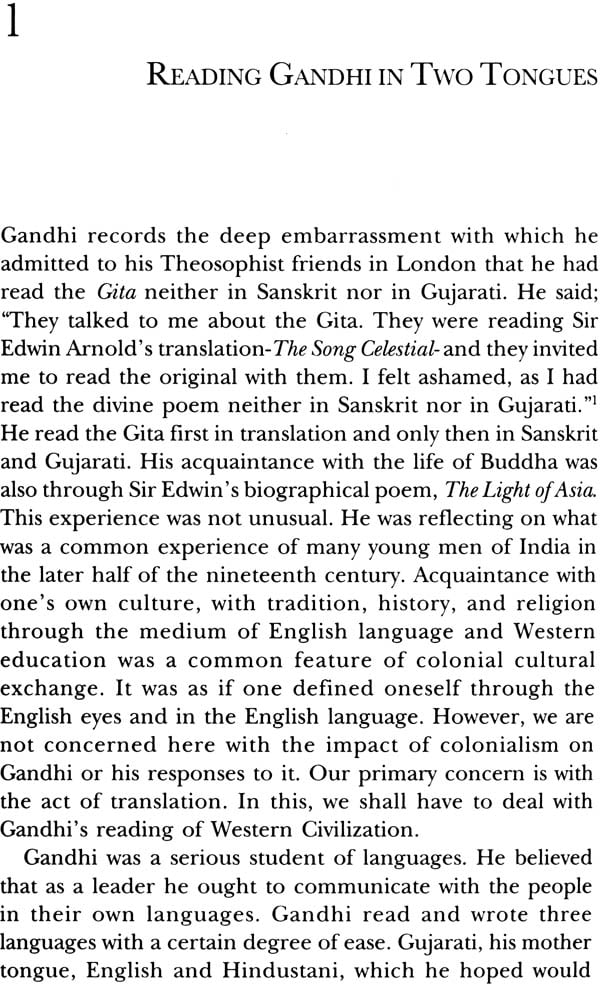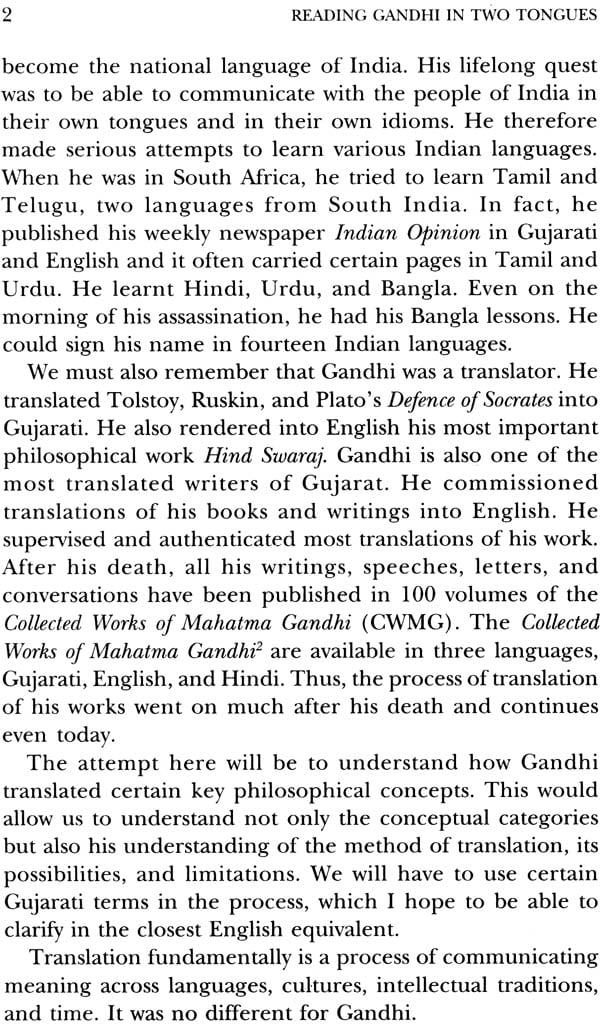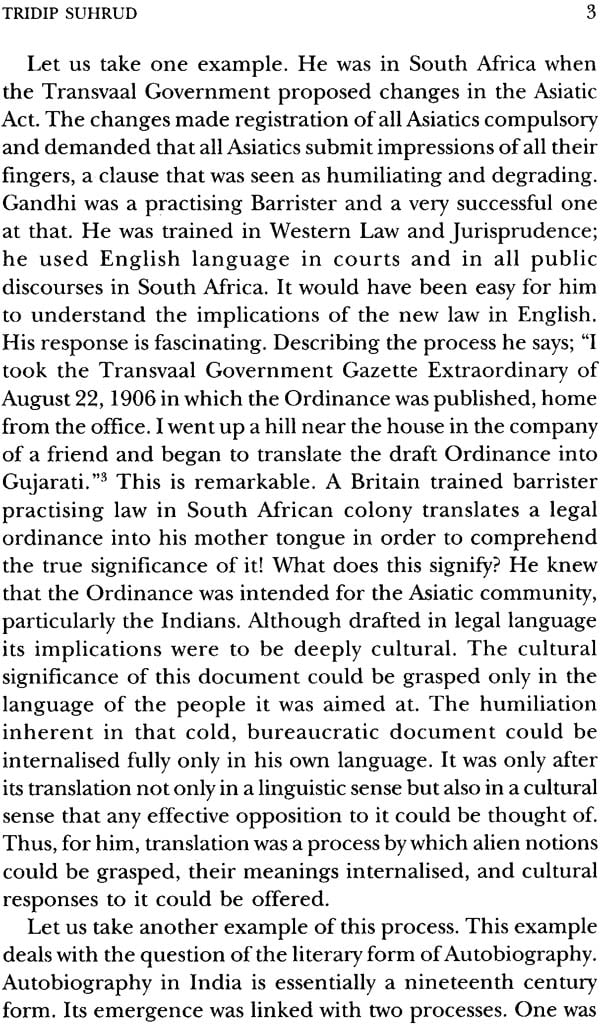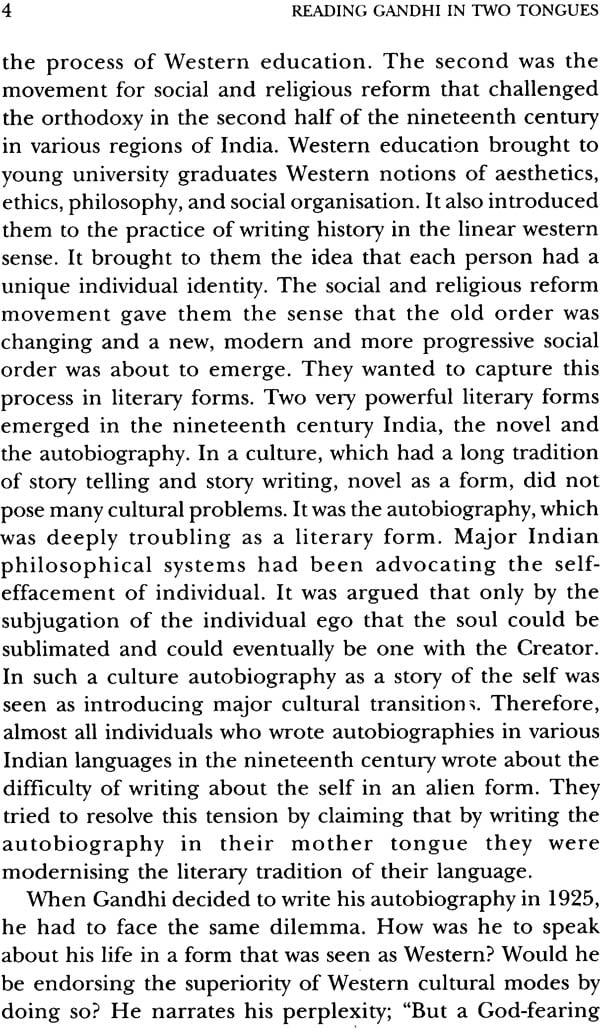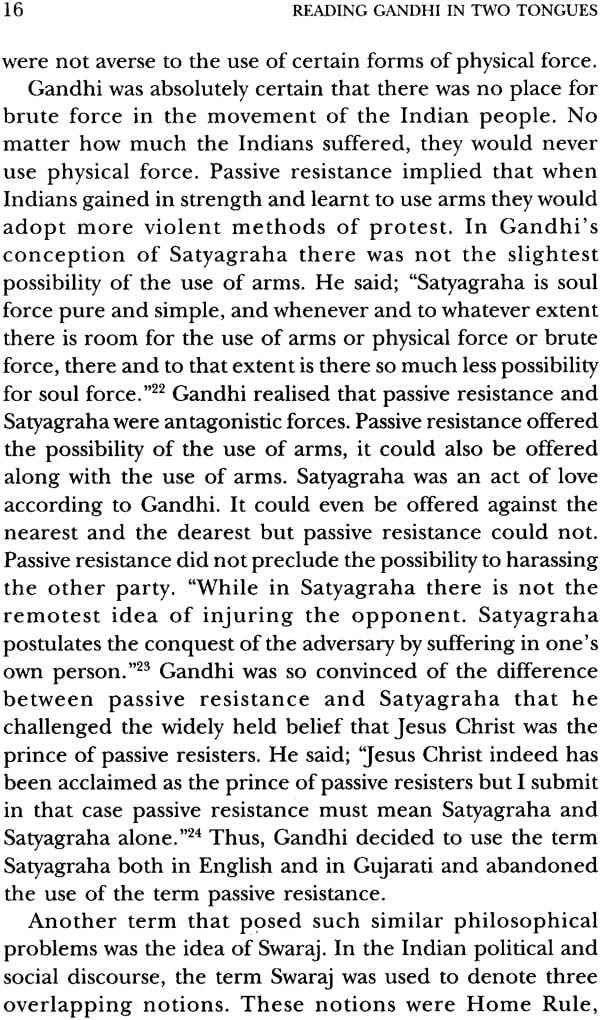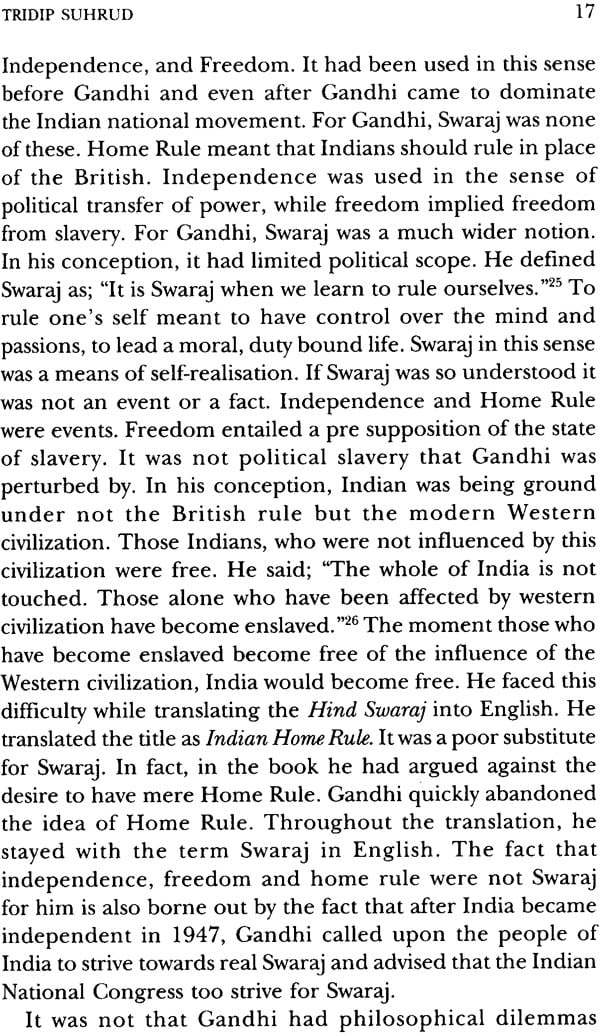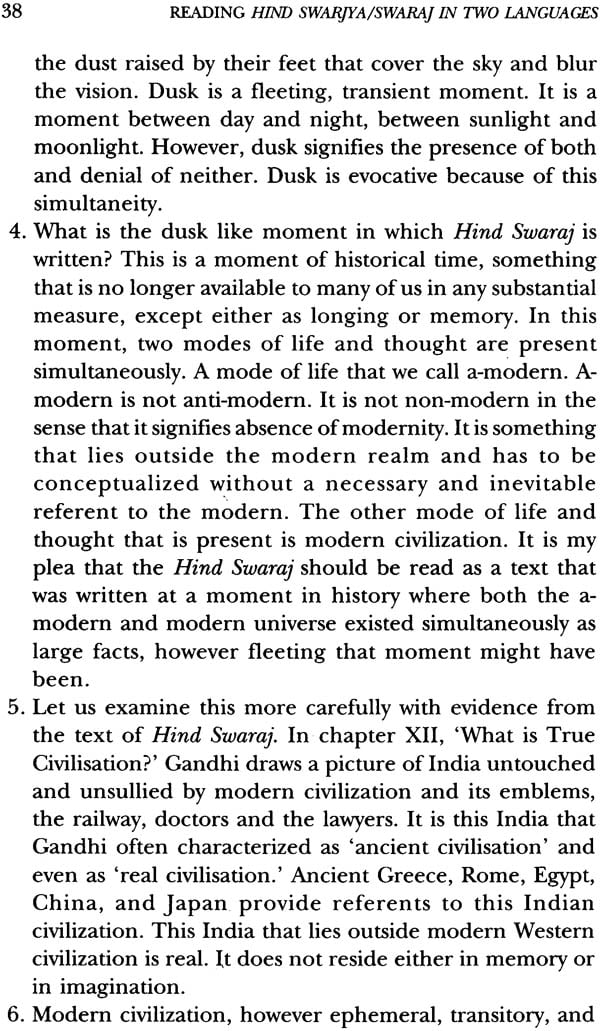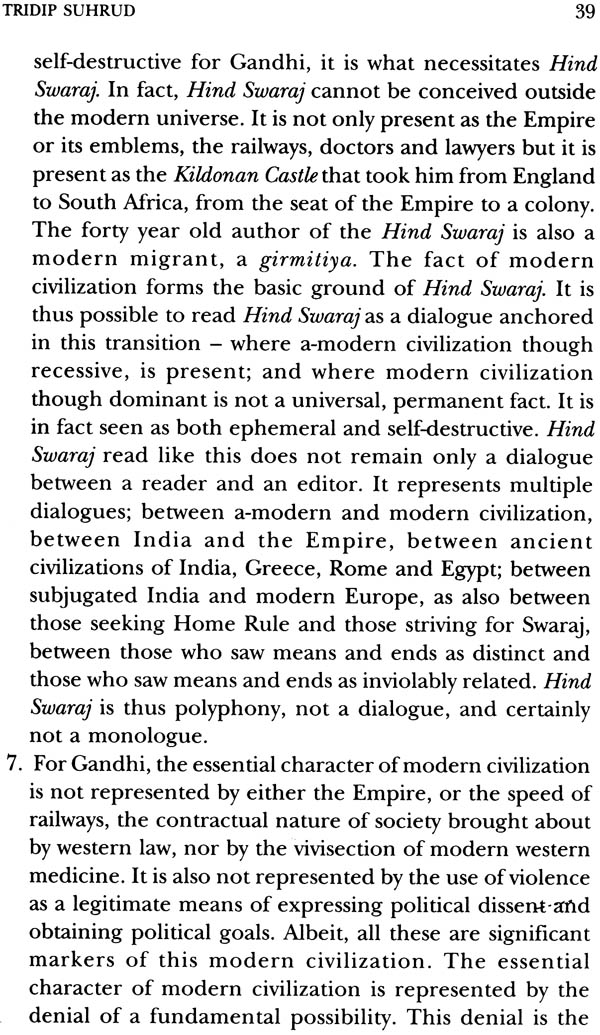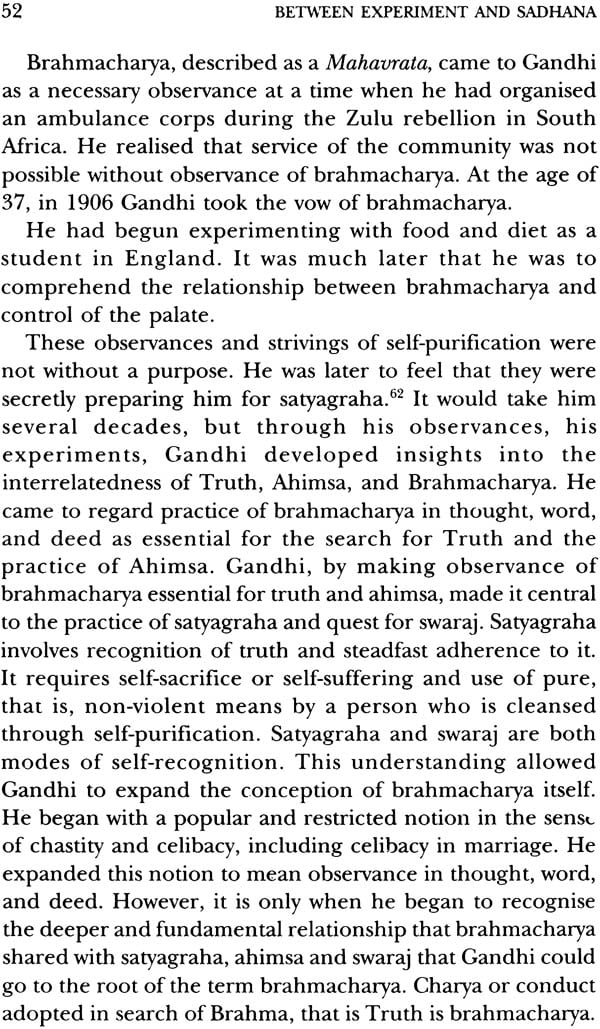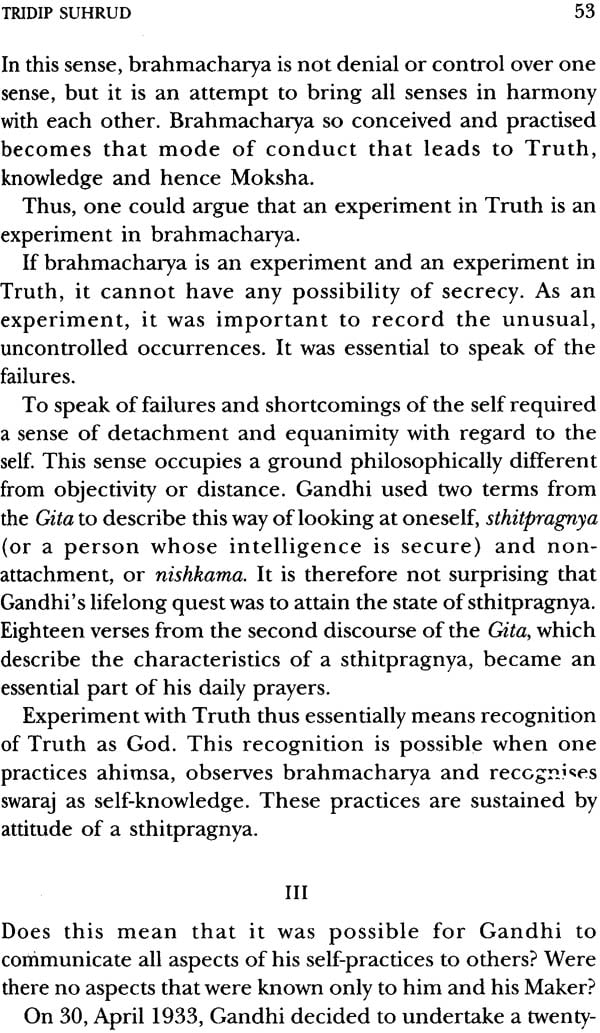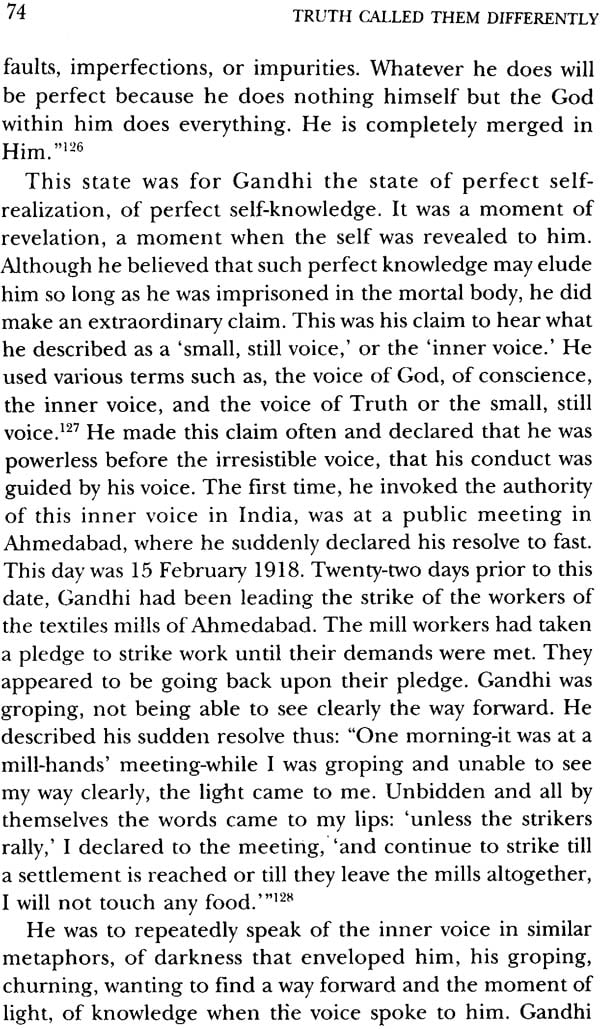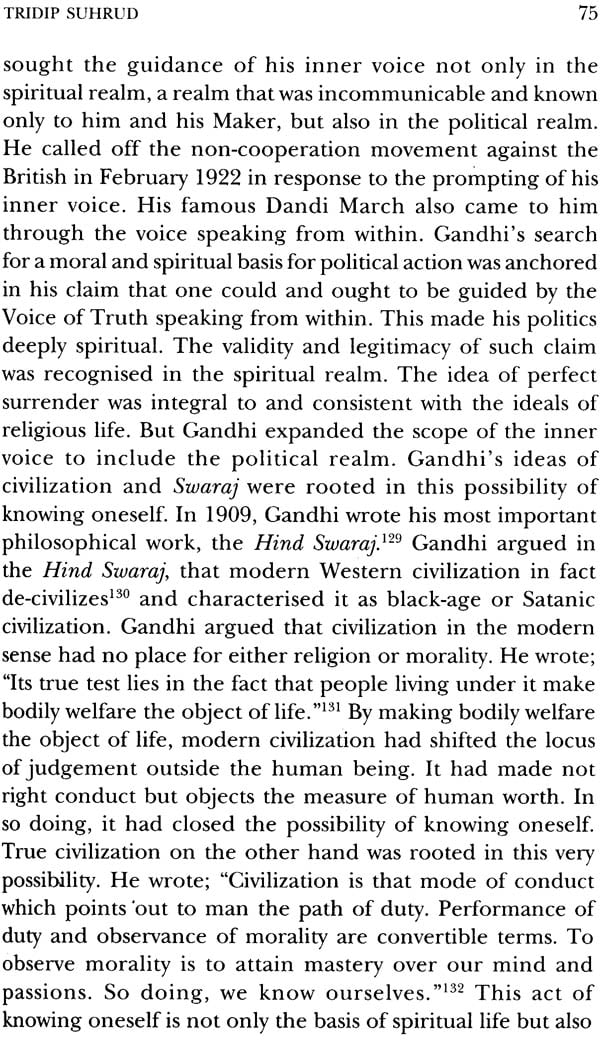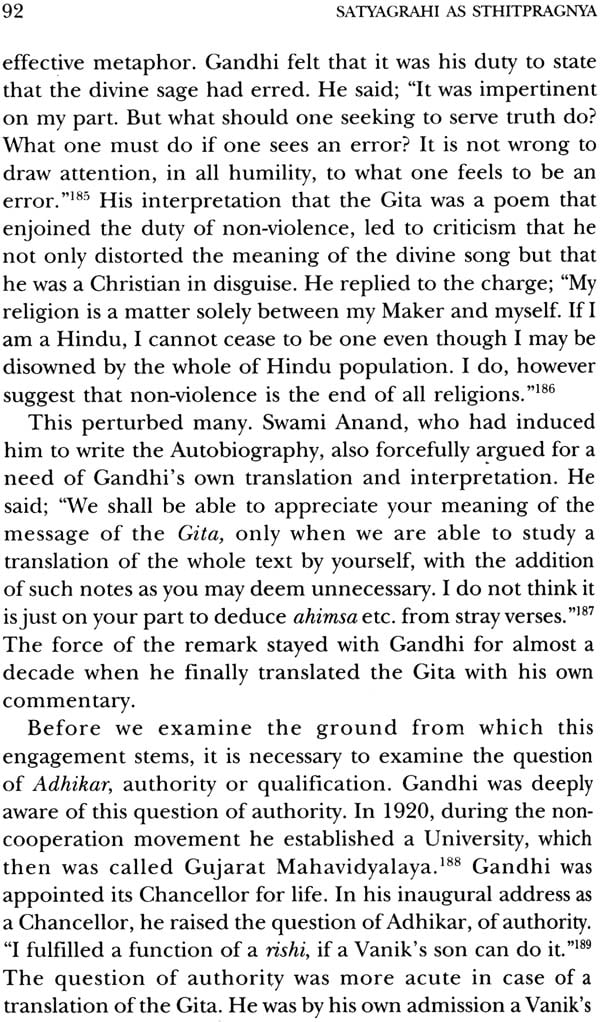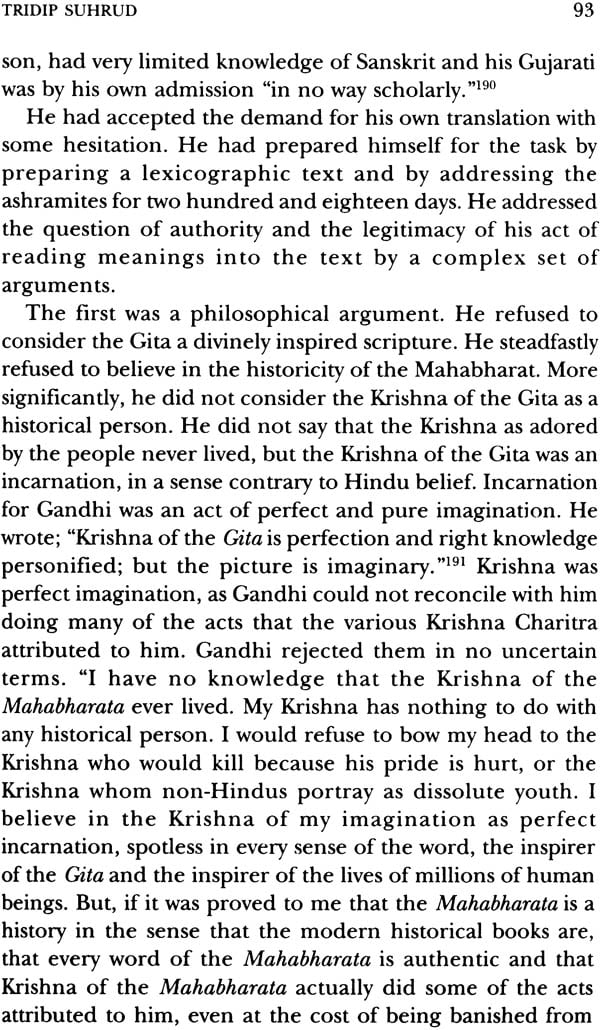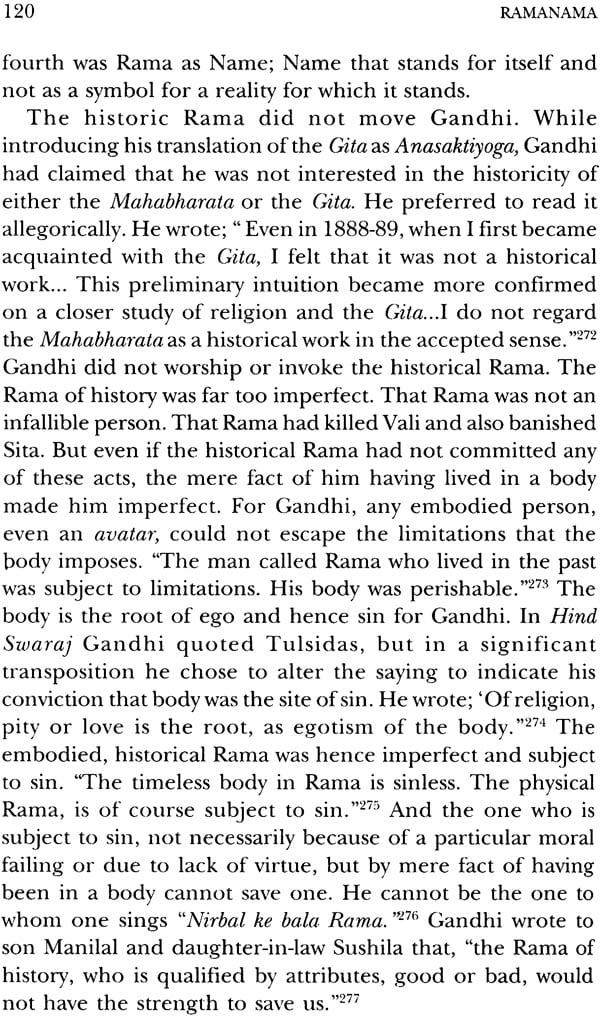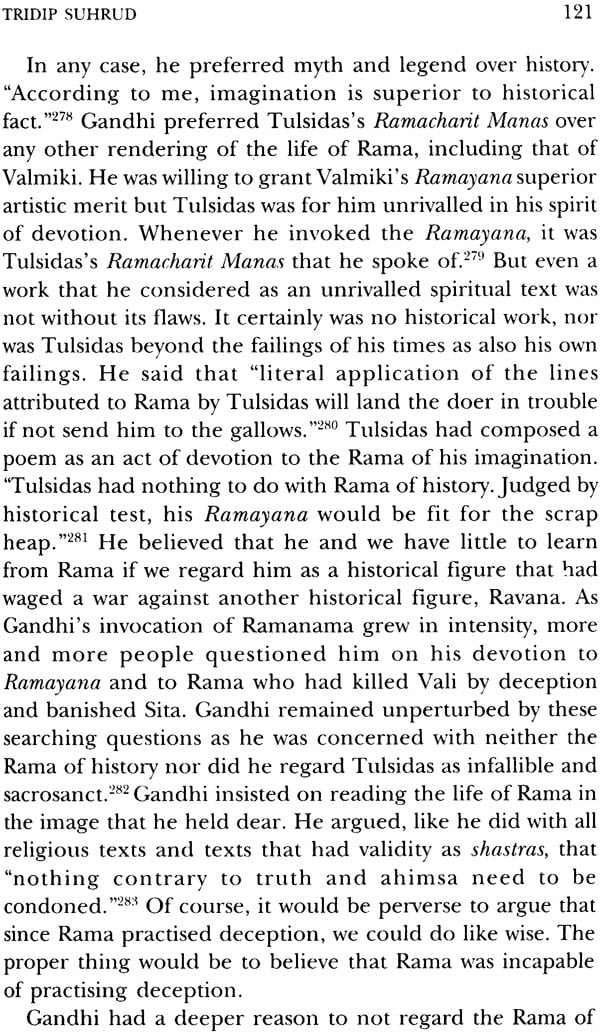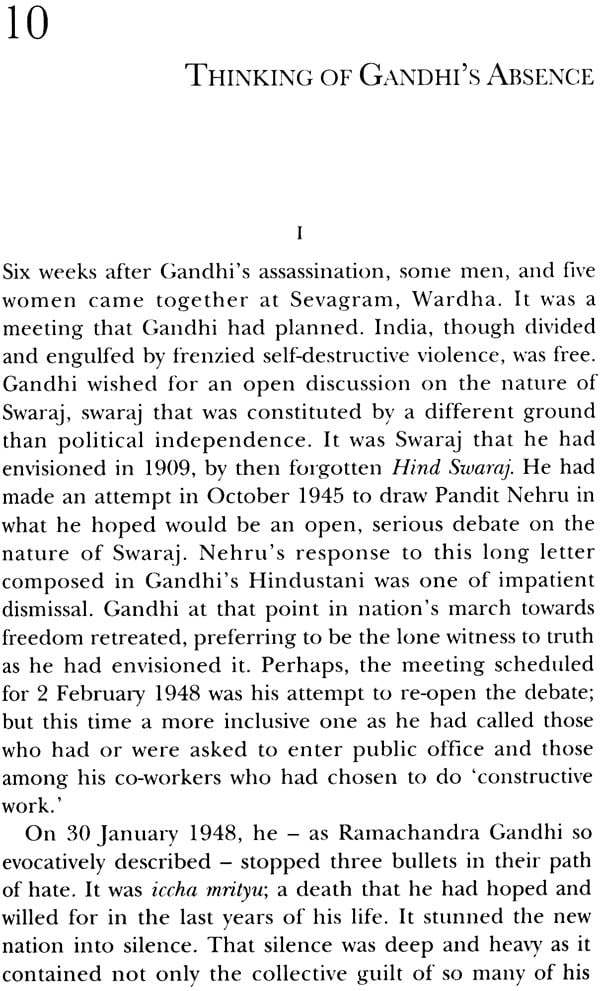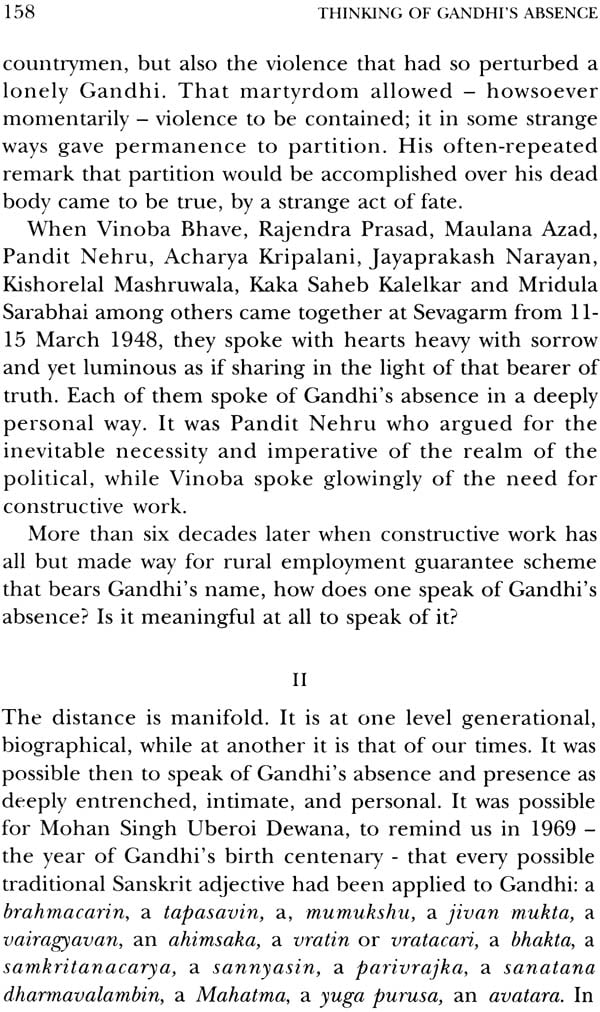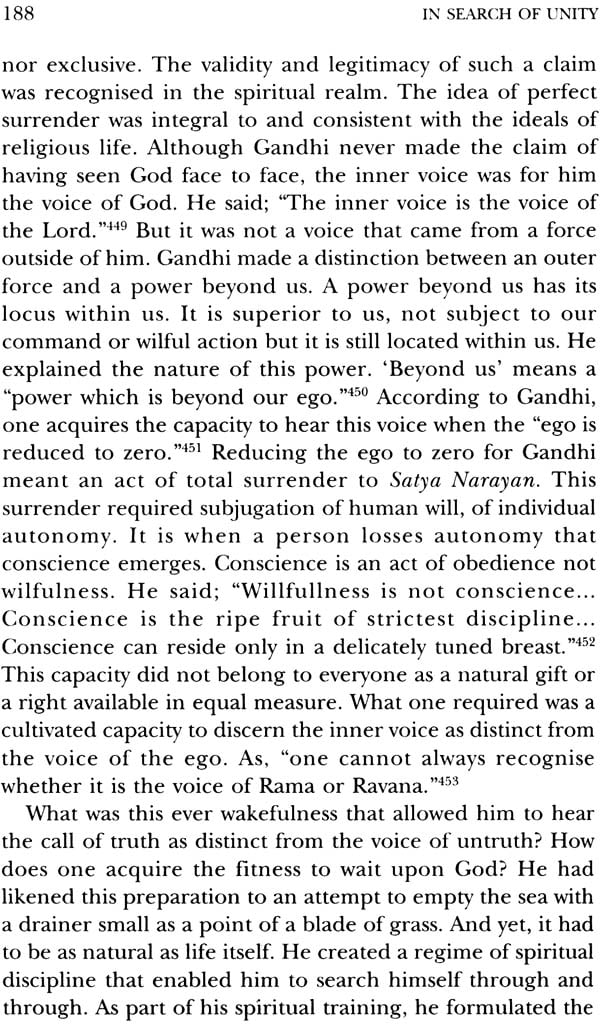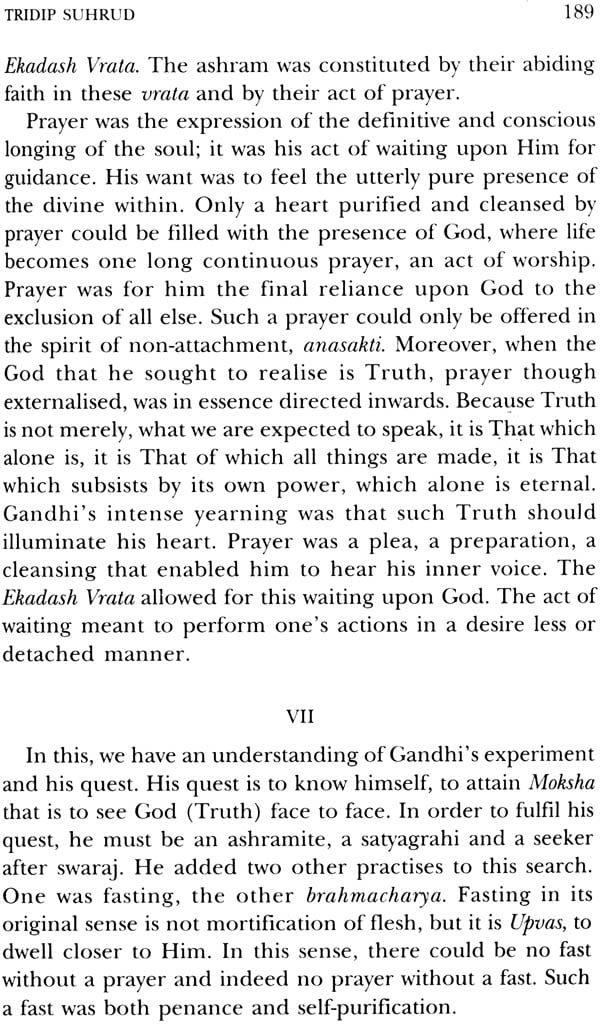
Reading Gandhi in Two Tongues (And Other Essays)
Book Specification
| Item Code: | NAH522 |
| Author: | Tridip Suhrud |
| Publisher: | Indian Institute of Advanced Study, Shimla |
| Language: | English |
| Edition: | 2012 |
| ISBN: | 9788179860960 |
| Pages: | 224 |
| Cover: | Paperback |
| Other Details | 8.5 inch x 5.5 inch |
| Weight | 290 gm |
Book Description
Reading Gandhi in Two Tongues and other essays, explores M K Gandhi's bilingual modes of thought. The essays collected here draw upon the Ashramic intellectual tradition of understanding Gandhi by placing his politics, his spiritual strivings, his constructive work and his practices of fasting, of brahmacharya and his desire to be a satyagrahi and sthitapragyna at the centre of his key texts. This act of reading Gandhi is akin to telling the beads, comforting and meditative in its repetitiveness.
Tridip Suhrud is the author of Writing Life: Three Gujarati Thinkers, Hind Swarj Vishe, Hind Swaraj: Ek Anushilan (forthcoming), Kavi Ni Choki (forthcoming) and An Autobiography or The Story of My Experiments With Truth: A Table of Concordance. He has edited and translated (with Suresh Sharma) a bilingual edition of M K Gandhi's Hind Swaraj, and edited (with Peter Ronald deSouza), Speaking of Gandhi's Death. He has translated Ashis Nandy and Ganesh Devy into Gujarati and Narayan Desai's My Life Is My Message and C B Dalal's Harilal Gandhi: A Life into English for which he was given the Sahitya Akademi Award for translation.
Reading Gandhi for me has been akin to telling the beads; a daily practice, comforting in its repetitiveness, sometimes meditative. Telling beads is necessary for those who have no direct, unmediated access to the light they seek.
The journey of understanding Gandhi for me has been in and through the Gujarati language. Modern Gujarati prose has been chiselled and enriched by some of Gandhi's closest associates and fellow ashramites: Swami Anand, Kakasaheb Kalelkar, Mahadev Desai, Kishorelal Mashruwala and Prabhudas Gandhi. This ashramic tradition, together with Dharmananda Kosambi, Muni Jin Vijayji, Acharya Kripalani, Pandit Sukhlalji at the Gujarat Mahavidyalaya (now Gujarat Vidyapith) crafted the most creative and catholic intellectual tradition of modern Gujarat. Though recessive, it shows its possibility and vitality in the writings of Narayan Desai - perhaps the last bearer of this tradition - and his unique: way of Nama Smaran, the Gandhi Katha. My own journey to Gandhi has been mediated by this tradition.
Gandhi wrote his key texts in Gujarati. But, Gandhi was not a thinker who thought solely or primarily in and through the semantic universe of the Gujarati language. Gandhi was a bilingual thinker: not in the sense that he wrote arresting prose both in English and Gujarati, but in a more fundamental way. Gandhi's conceptual universe was deeply informed by his reading of European Civilisation and European thinkers. Hind Swaraj, his key philosophical work, bears testimony to this bilinguality.
He rendered Hind Swaraj into English, while other key texts were translated by his closest associates like Mahadev Desai and Valji Govindji Desai. Gandhi debated, revised and authenticated these translations. An act of translation, in its deep faithfulness and fidelity, is a creative act; it introduces transpositions in the semantic universe. A simultaneous reading of Gandhi's autobiography in Gujarati and in Mahadev Desai's luminous English translation bears marks of this creativity and transpositions.
Gandhi's own bilinguality and the creative engagement of his translators makes reading Gandhi in two tongues both an enriching and an essential act. There is another kind of unity to which the ashramic intellectual tradition points. This is the centrality of practice as necessary referent to the thought. Gandhi's ashrams were communities of co- religionists. The Satyagrahis, spiritual seekers and constructive workers through their own experiments and strivings, gave meaning to Gandhi's strivings in political, social and spiritual realms. This division itself would have little meaning in that tradition. The ashramic tradition teaches us to look at Gandhi's thought and life practices, his politics and spirituality, his desire for self-realisation and striving for Swaraj as inter-woven texture.
The essays collected here bear indelible marks of this tradition. Prayer, giving himself up to Ramanama, fasting as Upvas (dwelling closer to Him) and brahmacharya inform the reading of Gandhi's key texts. His spiritual strivings, his desire to attain Moksha, to see God face to face inform the reading of the quest for Swaraj as capacity to rule one's self. Swaraj as rule over the self is linked to his desire to be a Sthitapragnya, and his reading of the Gita informs the understanding of Brahmacharya as conduct (Charya) that leads one to Truth (Brahma). His Brahmacharya gave him the capacity to hear a small, still voice, which guided not only his spiritual quest but his political judgement.
These essays go over the same texts, same sets of practices again and again. The act of telling the beads is a repetitive act. Repetition, it is hoped, creates a sense of intimacy, proximity. It might also deepen one's understanding.
| Preface | vii | |
| Acknowledgement | IX | |
| ONE | Reading Gandhi in Two Tongues | 1 |
| TWO | Reading Hind Swarajya/Swaraj in Two Languages | 21 |
| THREE | Between Experiment and Sadhana: Towards an Understanding of Gandhi's Observances | 47 |
| FOUR | A Small, Still Voice | 61 |
| FIVE | Truth Called Them Differently | 73 |
| SIX | Satyagrahi as Sthitpragnya: Gandhi's Reading of the Gita | 89 |
| SEVEN | Brahmacharya as Art | 109 |
| EIGHT | Ramanama | 117 |
| NINE | Exiled At Home: The Burden that is Gandhi | 129 |
| TEN | Thinking of Gandhi's Absence | 157 |
| ELEVEN | In Search of Unity | 167 |
| Endnotes | 193 |
